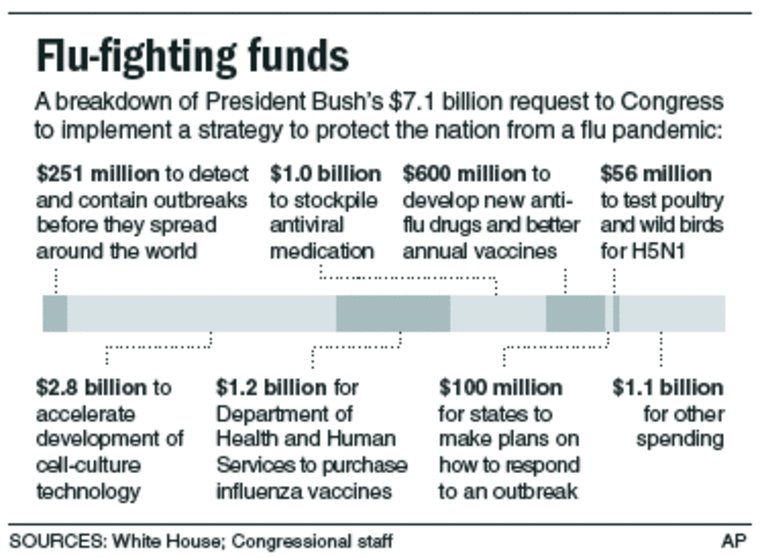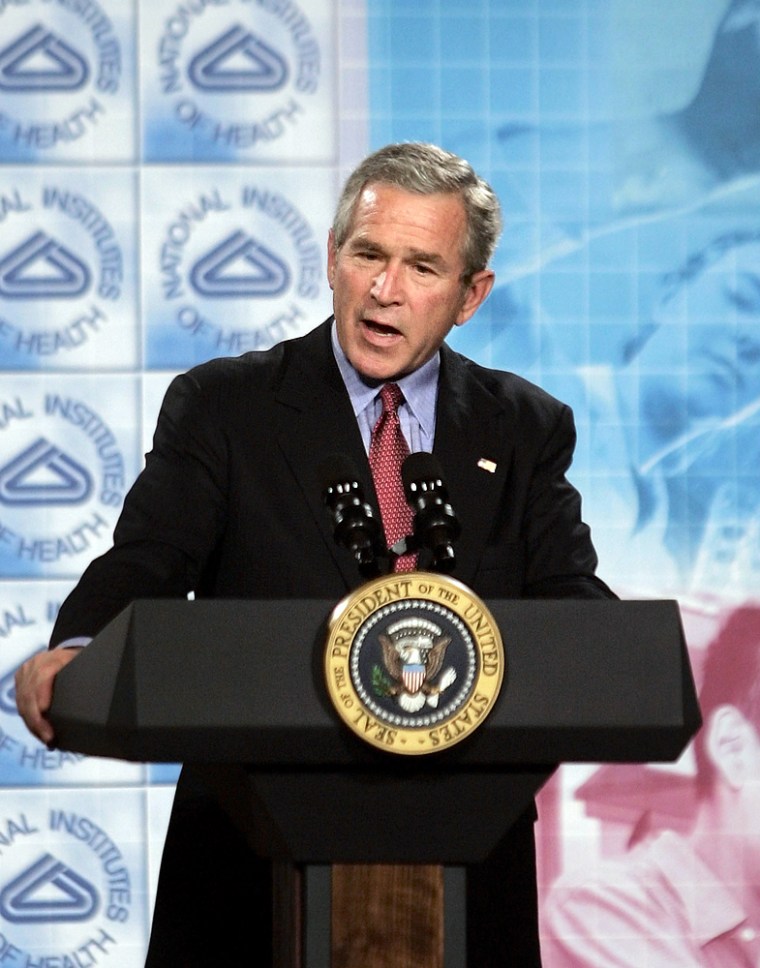Sustained person-to-person spread of the bird flu or any other super-influenza strain anywhere in the world could prompt the United States to implement travel restrictions or other steps to block a brewing pandemic, say federal plans released Wednesday.
If a super-flu begins spreading here, states and cities will have to ration scarce medications and triage panicked patients to prevent them from overwhelming hospitals and spreading infection inside emergency rooms, the plan says.
How domestic travel would be curtailed has not been developed in its entirety, Health and Human Services Secretary Michael Leavitt said at a press conference Wednesday. Those plans would be worked out with the Department of Transportation "going forward," he said.
The details released Wednesday deal with public health and medical issues, such as medical training for local providers and domestic production of vaccines. It doesn't include how the government would react to the economic impact of a pandemic or how food supplies would be distributed.
"We are now releasing the medical and public health portion of what will be a national plan," Leavitt said. "The national plan needs to include other portions of the federal government and integrated plans with state and local and private interests."
The plan provides long-awaited guidance to the front-line local officials urging them to figure out now how they would prevent that — and to practice their own plans to make sure they’ll work.
Pandemics, or worldwide outbreaks, strike when the easy-to-mutate influenza virus shifts to a strain that people have never experienced before, something that happened three times in the last century.
Children at risk
It’s impossible to predict the toll of the next pandemic, but a bad one could infect up to a third of the population and, depending on its virulence, kill anywhere from 209,000 to 1.9 million Americans, say the Bush administration’s new Pandemic Influenza Plan.
The illness will spread fastest among school-aged children, infecting about 40 percent of them, and decline with age, the plan estimates. It puts the health costs alone, not counting disruption to the economy, at $181 billion for even a moderately bad pandemic.
It’s also impossible to predict when the next pandemic will strike. But concern is rising that the Asian bird flu, called the H5N1 strain, might trigger the next one if it eventually becomes easily spread from person-to-person.
With a public increasingly jittery about the H5N1 spread among birds and a drumbeat of criticism that the nation is woefully unprepared, President Bush on Tuesday outlined a $7.1 billion strategy to get ready for the next pandemic. Topping his list is improving systems to detect and contain the next super-flu before it reaches the United States — and overhauling the vaccine industry so that eventually, scientists could quickly brew enough for everyone within months of a pandemic’s appearance.
That vaccine improvement will take years to implement — and the details released Wednesday stress that early on, the public will be depending on scarce supplies of anti-flu drugs and stockpiled vaccines and old-fashioned ways of limiting viral spread.
Stockpiled drugs “are not the equivalent of preparedness,” Health and Human Services Secretary Mike Leavitt told a Senate subcommittee Wednesday as he unveiled the details.
Indeed, the plan stresses that if a pandemic begins, Americans should limit visits to doctors and hospitals unless absolutely necessary and hospitals should triage those seeking care so that suspected super-flu cases have limited contact with other patients, the plan says.

But critics battered Bush’s plan for the federal government to stockpile enough of the anti-flu drugs Tamiflu and Relenza to treat 44 million people and make states buy another 31 million treatment courses, mostly with their own money, to cover the rest of the anticipated need.
“States are extremely nervous about what’s going to be required of them,” Sen. Patty Murray, D-Wash., told Leavitt.
And Sen. Arlen Specter, R-Pa., said he doesn’t trust the administration’s assessment of the nation’s health care needs and demanded that Leavitt provide more information about its response to the evolving bird flu.
“Could we have acted sooner to avoid the situation we are in now, in effect running for cover?” he said. “We need a better way of finding out what the hell is going on.”
